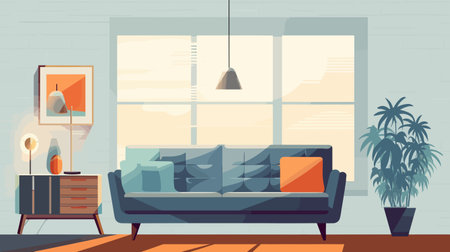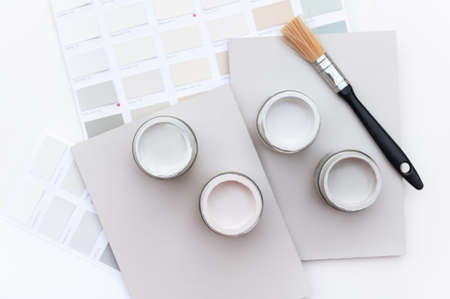1. Understanding the History of British Paint Colours
When considering how to select and combine traditional British paint colours, it is crucial to start by understanding their rich historical context. Traditional British paint palettes draw deeply from the architectural and cultural heritage of the nation, shaped by social trends, technological advances, and aesthetic movements across different eras. During the Georgian period (1714–1830), paint colours were characterised by muted tones such as soft greys, stone whites, sage greens, and pale blues—reflecting a preference for subtle elegance and classical restraint. The Victorian era (1837–1901) saw a shift towards deeper, richer hues like deep reds, olives, ochres, and navy blues, influenced by advancements in pigment technology and a fascination with ornamentation and global influences from the British Empire. In contrast, the Edwardian period (1901–1910) favoured lighter pastels and fresh neutrals as a reaction to previous opulence, embracing more delicate shades such as duck-egg blue, primrose yellow, and gentle lavenders. Each of these periods contributed a distinct palette that still resonates today in British interior design. Recognising these historical influences helps you to create an authentic scheme that not only honours tradition but also complements contemporary living spaces.
2. Identifying Classic British Colour Palettes
When considering how to select and combine traditional British paint colours, it is essential to first understand the distinctive palettes that have shaped interiors across the UK for centuries. The British approach to colour is marked by understated elegance, with a preference for muted pastels, sophisticated neutrals, and rich earth tones. These classic hues reflect the countrys historic architecture, variable climate, and cultural heritage.
Exploring Emblematic British Hues
Traditional British interiors often draw on a range of shades inspired by nature and period properties—from soft greys that echo the misty countryside to deep greens reminiscent of stately home gardens. Paint manufacturers such as Farrow & Ball and Little Greene are renowned for their historically accurate, regionally inspired colours. Their collections typically feature evocative names like “Borrowed Light,” “Pigeon,” or “Celestial Blue,” each referencing either a place, an era, or a quintessentially British experience.
Comparison of Heritage Paint Ranges
| Paint Brand | Palette Characteristics | Notable Colours |
|---|---|---|
| Farrow & Ball | Chalky matt finishes; subtle undertones; inspired by historic British houses | Cornforth White, Hague Blue, Setting Plaster |
| Little Greene | Pigment-rich; rooted in 18th-20th century British design; wide range of greens and blues | Obsidian Green, French Grey, Celestial Blue |
| Dulux Heritage | Sophisticated neutrals; warm and cool tones; modern durability with classic appeal | Quartz Grey, Potters Pink, Deep Ultramarine |
Key Takeaways for Palette Selection
Selecting a classic British palette often involves layering soft neutral backgrounds with accent colours derived from natural materials or historical references. For example, a sitting room may pair an off-white like Farrow & Ball’s “Slipper Satin” with deep olive trim and ochre furnishings. This method ensures timelessness while allowing personal expression within an authentic framework.

3. Selecting the Right Colours for Different Spaces
When considering traditional British paint colours, it is essential to respect both the function and historical character of each room. The right choice will not only enhance the period authenticity but also create a harmonious atmosphere throughout your home.
Kitchens
Kitchens in historic British homes were often painted in practical, durable shades. Soft off-whites, muted sage greens, and gentle lead greys provide a timeless backdrop while withstanding daily wear. These hues reflect the utilitarian origins of the space yet bring warmth and calmness suitable for modern living. Consider finishes that are easy to clean but remain matte or eggshell for an authentic touch.
Living Rooms
The living room traditionally served as a space for relaxation and socialising. Rich, earthy tones such as deep olive, heritage blues, and warm ochres are rooted in Georgian and Victorian palettes. For a truly British feel, choose colours that reference natural materials—think stone, clay, and woodland greens. Layer these with lighter trims or ceilings in chalky whites to balance sophistication with comfort.
Hallways
Hallways benefit from lighter shades that brighten what can be narrow or dimly lit areas in older British properties. Classic buff, gentle greys, and pale yellows reflect light and give a welcoming first impression. To retain period integrity, consider using wainscoting or dado rails painted in contrasting deeper tones—a common feature in Victorian and Edwardian interiors.
Bedrooms
For bedrooms, soft pastel hues such as dusky pinks, powder blues, and lavender tones evoke the restful elegance seen in Regency and Edwardian homes. Avoid overly bold colours; instead opt for those with a slightly muted or ‘dusty’ quality. These understated shades foster tranquillity while still feeling distinctly British.
Maintaining Authenticity Across Spaces
To ensure your choices feel cohesive and historically accurate, research the typical colour schemes from your property’s era or locality. Always test samples in different lights before committing. By carefully selecting and combining these traditional palettes according to room function, you can achieve both authenticity and everyday usability in your British home.
4. Combining Colours for Cohesive Interiors
Achieving a harmonious interior with traditional British paint colours relies on thoughtful blending and contrasting. The British approach typically values subtlety, balance, and a layered use of colour, drawing inspiration from the nation’s rich architectural and decorative heritage. Here are some practical strategies for combining these hues effectively.
Layering for Depth and Warmth
Layering is a hallmark of classic British interiors. Start with a neutral or muted base—think soft greys, stone whites, or pale sage greens—which provides an unobtrusive backdrop. Gradually introduce deeper tones such as navy blue, oxblood red, or forest green through woodwork, doors, or accent walls. Layering in this manner adds visual depth without overwhelming the space.
Balancing Contrasts with Accents
Contrasting colours can invigorate a room if used judiciously. For instance, pairing a warm terracotta with a cool blue can create a lively but grounded scheme typical of Arts & Crafts interiors. To avoid clashing, limit bold contrasts to smaller architectural features like skirting boards or window frames, while keeping larger surfaces more subdued.
Typical British Colour Pairings
| Main Wall Colour | Trim/Accent Colour | Effect |
|---|---|---|
| Creamy White | Sage Green | Calm and airy; classic country feel |
| Pale Blue | Navy Blue | Layered blues for serene depth |
| Muted Yellow | Oxblood Red | Warmth with heritage drama |
Consider Proportion and Room Function
The proportion of each colour matters. In living rooms and bedrooms, softer combinations promote relaxation; dining rooms can take richer contrasts for added formality. A good rule of thumb is the 60-30-10 ratio: 60% dominant base colour, 30% secondary colour, 10% accent.
The British Accent: Subtle but Distinctive Touches
Add personality by using quintessentially British touches—perhaps a pop of mustard yellow on a side table or deep racing green on an interior door. These accents nod to tradition while allowing individual expression.
By thoughtfully blending and contrasting traditional British paint colours in this layered way, you can achieve interiors that feel both timeless and inviting—hallmarks of classic British design.
5. British Decorating Details and Finishing Touches
When striving for an authentic British interior, it’s essential to pay close attention to the finer details and finishing touches that bring traditional paint schemes together. These elements—often subtle but always significant—include paint finishes, woodwork, skirting boards, and even ceiling colours.
Choosing the Right Paint Finish
Classic British homes are characterised by their use of different paint sheens to highlight architectural features. Traditionally, walls are painted in a matt or eggshell finish, offering a gentle, chalky look that absorbs light and adds warmth. Woodwork such as doors, window frames, and dado rails typically receives a more resilient eggshell or satin finish, which provides a slight sheen and is easier to clean—perfect for high-traffic areas. Reserve higher gloss finishes for statement trims or period features if you wish to add a touch of formal elegance reminiscent of stately homes.
Emphasising Woodwork and Skirting Boards
In British interiors, woodwork is rarely overlooked. Skirting boards, architraves, and cornices are often painted in a contrasting yet complementary shade to the walls. A common approach is to use a soft white or off-white (such as “Pointing” or “Slipper Satin”) on trim work, which frames the wall colour and gives rooms a crisp, finished appearance without appearing too stark. For a more dramatic effect that channels Victorian or Georgian influences, consider painting woodwork in deep hues like navy, bottle green, or even black for a cocooning feel.
The Subtlety of Ceiling Colours
The ceiling—or “the fifth wall”—is another opportunity to enhance your scheme. The classic choice is to use a slightly lighter tint of your wall colour or a warm neutral white such as “White Tie” or “School House White.” This prevents harsh contrast and maintains a soft, enveloping atmosphere typical of British rooms. In period homes with ornate plasterwork or coving, highlighting these details with subtle tonal variations can draw the eye upward and showcase craftsmanship.
Tips for Maintaining an Authentic British Look
- Keep your palette cohesive: Stick to no more than three main shades per room to avoid visual clutter.
- Use heritage paint brands: Opt for well-established names like Farrow & Ball or Little Greene for historically accurate colours and finishes.
- Mind historical context: If restoring an older property, research traditional combinations specific to its era—Edwardian schemes differ notably from Victorian ones.
- Consider natural wear: Allow some characterful ageing on woodwork; gently distressed finishes can lend lived-in charm typical of many British homes.
The Finishing Flourish
The final layer of detail—carefully chosen hardware, period-appropriate light switches, and thoughtfully painted radiators—can elevate your space from simply painted to truly British. By embracing these nuanced approaches to detailing and finish selection, you’ll ensure your home feels rooted in classic British style while reflecting your own personality.
6. Sourcing Authentic and Sustainable British Paints
Selecting and combining traditional British paint colours is only as effective as the quality of the paints themselves. To achieve a truly authentic finish in your home, it is crucial to source paints that are not only true to heritage shades but also manufactured with respect for the environment. The UK has a proud tradition of producing high-quality paints, and several local brands excel in both authenticity and sustainability.
Where to Find Quality Traditional Paints in the UK
Many reputable specialist retailers can be found throughout the country, from independent hardware shops to dedicated paint merchants. For those seeking period-accurate colours, it’s wise to consult suppliers who understand the nuances of traditional British palettes—these include family-run businesses and historical restoration experts. Additionally, many heritage paint manufacturers offer sample pots, making it easy to test colours in situ before committing.
Environmental Considerations
The environmental impact of paints is an increasing concern for homeowners today. Look for water-based formulas with low or zero VOC (Volatile Organic Compounds) content to minimise indoor air pollution. Many British brands now prioritise responsible sourcing of raw materials, recyclable packaging, and eco-friendly production methods without compromising on colour depth or durability.
Recommended Local Brands
A few standout names include Farrow & Ball, renowned for their richly pigmented, eco-conscious paints inspired by historic British homes; Little Greene, which offers National Trust-endorsed heritage shades and actively pursues sustainable practices; and Edward Bulmer Natural Paint, which uses entirely plant-based ingredients and natural pigments for genuinely traditional finishes. These companies not only reflect Britain’s decorative heritage but also champion transparency about their processes and ingredients.
By choosing established local brands with a commitment to quality and sustainability, you ensure that your project celebrates both the character of traditional British interiors and the values of modern environmental stewardship. In this way, each brushstroke adds not only colour but also conscience to your living spaces.


